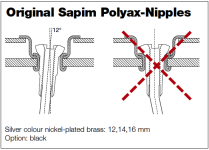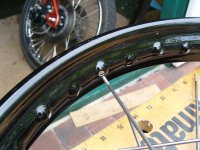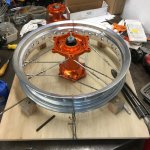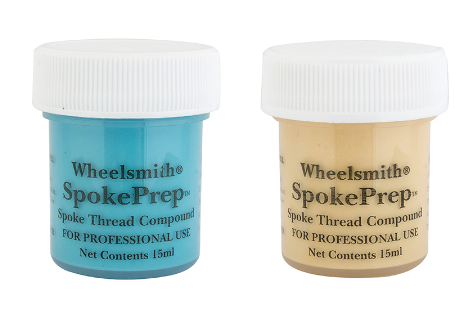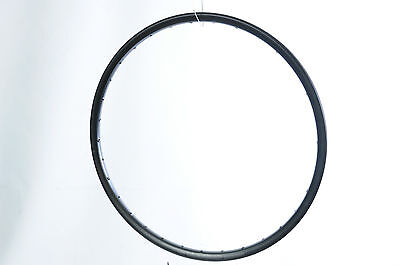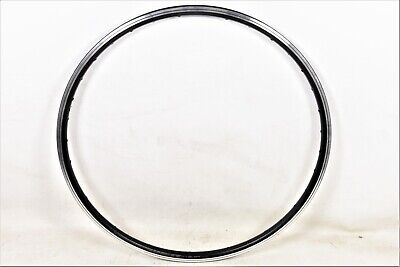Im not sure you read/understood properly.....I have both a 20" wheel bmx ebike and a bigger 26" wheel ebike. both with the same size/power hub motor and 1500w controller.
ive only just relaced the 20" after it being OOA for the past yearish (dented rim lip from flatish tyre+rough ground, not bad spoke holes).
the old 20" rim itself is still perfectly round.
I only posted the pic of the 20incher to show i can lace a wheel semi compentently to avoid patronishing tones.
I half missed the bad angle, because every single 26" 1000w wheel is laced exactly the same, and as somewhat proven by the grin spoke calculator, its impossible to get a good spoke angle and have spokes cross laced.
thanks for the help papasteve, as you can tell, im torn between radial n cross.....as everyone/internet says radial is "terrible" and to avoid it.
I half think most people who had a bad experience with radial.....didn't check spoke tightness after each ride for the first few weeks of riding on new spokes.
Changing/drilling/filing the spoke hole angle on a "naked" rim will still end up with the same problem somewhat.... the spoke will go through nicer but the nipple flange will still not sit evenly on the rim hole edge.....again causing uneven stress on one side of the rim holes.
A larger hole in a double skin rim with double skinned eyelets.....may or may not be stronger (depends what type of strength you mean).....as each eyelet joins the outer skin to the inner for extra overall reinforcement of the rim.
seeing as the strength failure in my current (cheap poo chinese) rim was the eyelet holes and not a malformed "doritoed rim"
i could extrapolate that a resonable quality rim from a reputable brand should be made of better material and be able to cope with larger spoke holes drilled for steel eyelets.
i really could do with a "better design rim" where each spoke hole has been pressed into the right shape/angle (like a motorbike wheel) see pic
View attachment 331449
dont suppose they do this for bicycle rims?
seems like short of finding the magical "above pictured rim" anything i do choose will end up being a compromise in one area or another



![20230314_124614[1].jpg](/sphere/data/attachments/192/192317-be506a05a387400257bee0074d6544f9.jpg)
![20230314_124606[1].jpg](/sphere/data/attachments/192/192318-a7de587be7d12c6aa739cf471f53e93e.jpg)
![20230314_124535[1].jpg](/sphere/data/attachments/192/192319-e35a4359b51612abd6b58d191a7bbe6c.jpg)


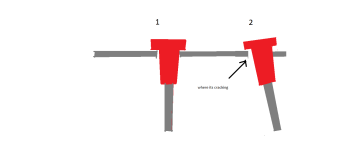
![20230315_165310[1].jpg 20230315_165310[1].jpg](https://endless-sphere.com/sphere/data/attachments/192/192362-9b0cbd7760e0bcb78663b571ef55c6ae.jpg)
